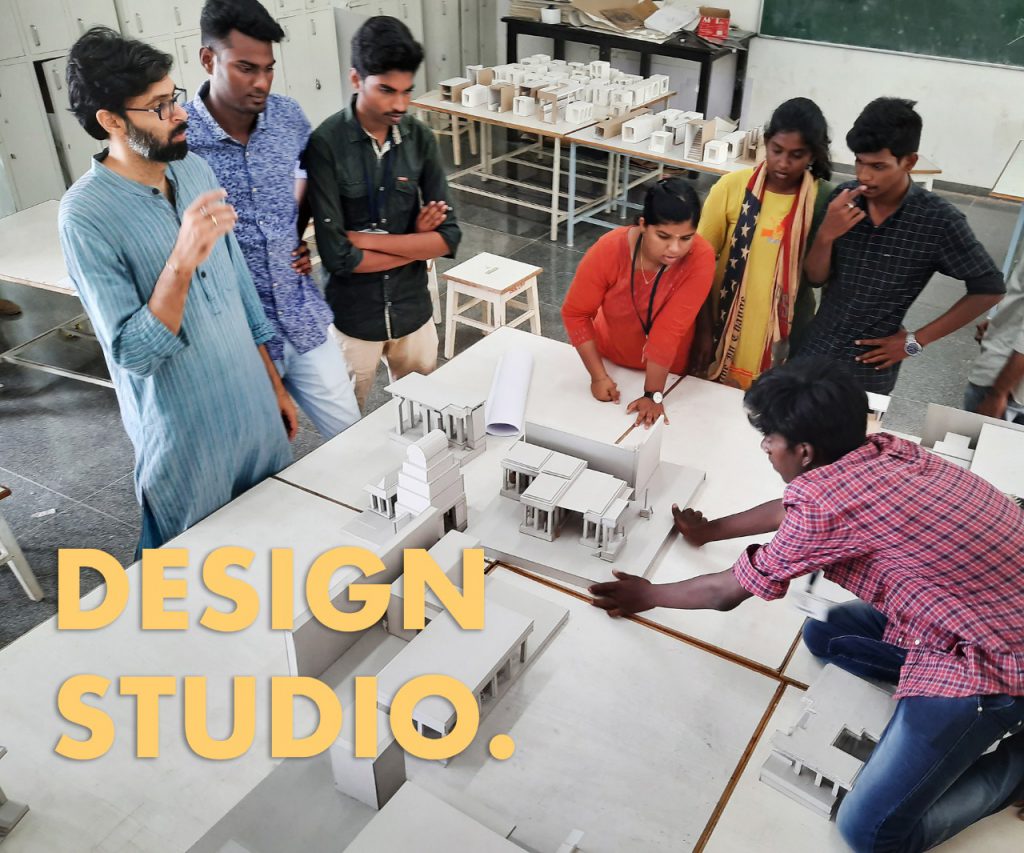
Architectural learning usually happens in a design studio, a place that develops traditions of ‘learning-by-doing’. The design studio is prescribed to better facilitate the architectural design thinking and learning. Studio based assessment enhances collaborative learning and team-work. It can encourage dispositional attributes like, curiosity, communication, problem solving, team-work, design management and independent learning. Industry professionals and experts are a regular feature in the design studios at CARE. Their presence among the students can be contagious. They have inspired students in all these years, since establishment, with their words of wisdom and actions.
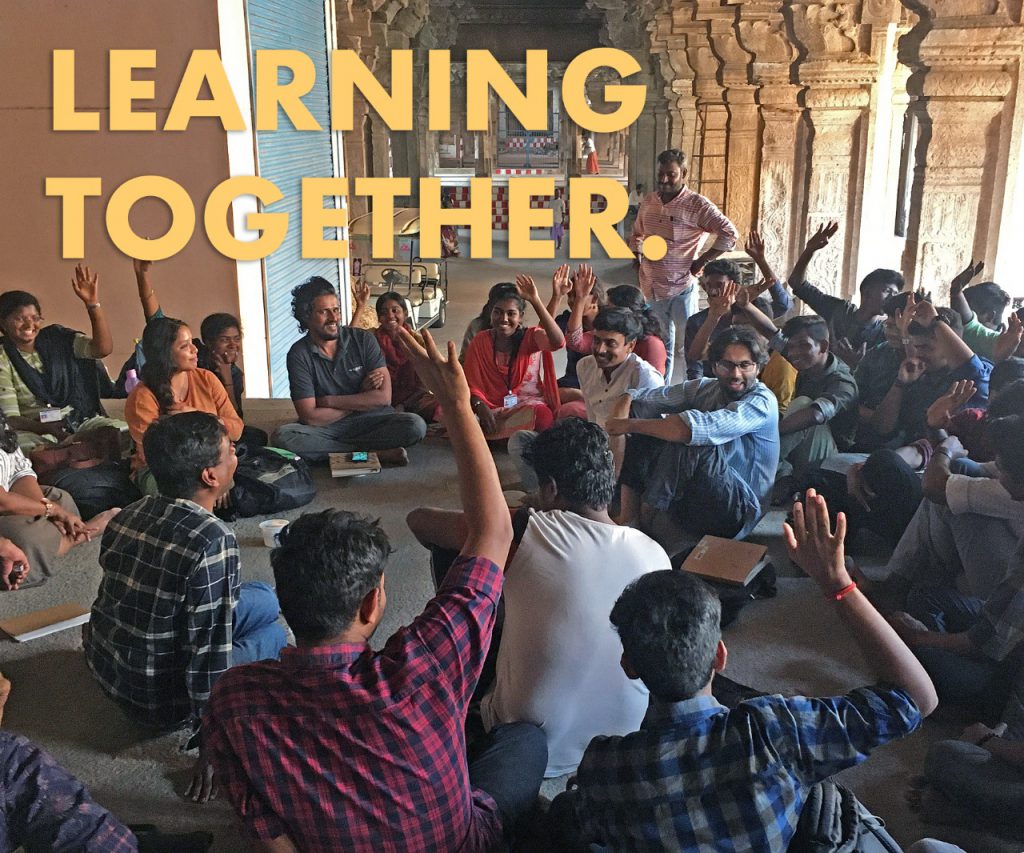
Partnering with other, international organisations, had proven valuable for the faculty as well. Exposure to alternate methods of learning and other methodologies of architectural education, has the capacity to delineate the students mind, from the accustomed routine in any architectural institution. At CARE, we have Vertical Studio in the even semester of the year. Vertical Studio is an internationally practiced concept, that is taught in a format which combines students of different years of architectural course. This studio encourages experimentation and speculation, to develop design thinking in new directions. This system challenges traditional, sequenced design studio setup by allowing students to interact and compete with one another.
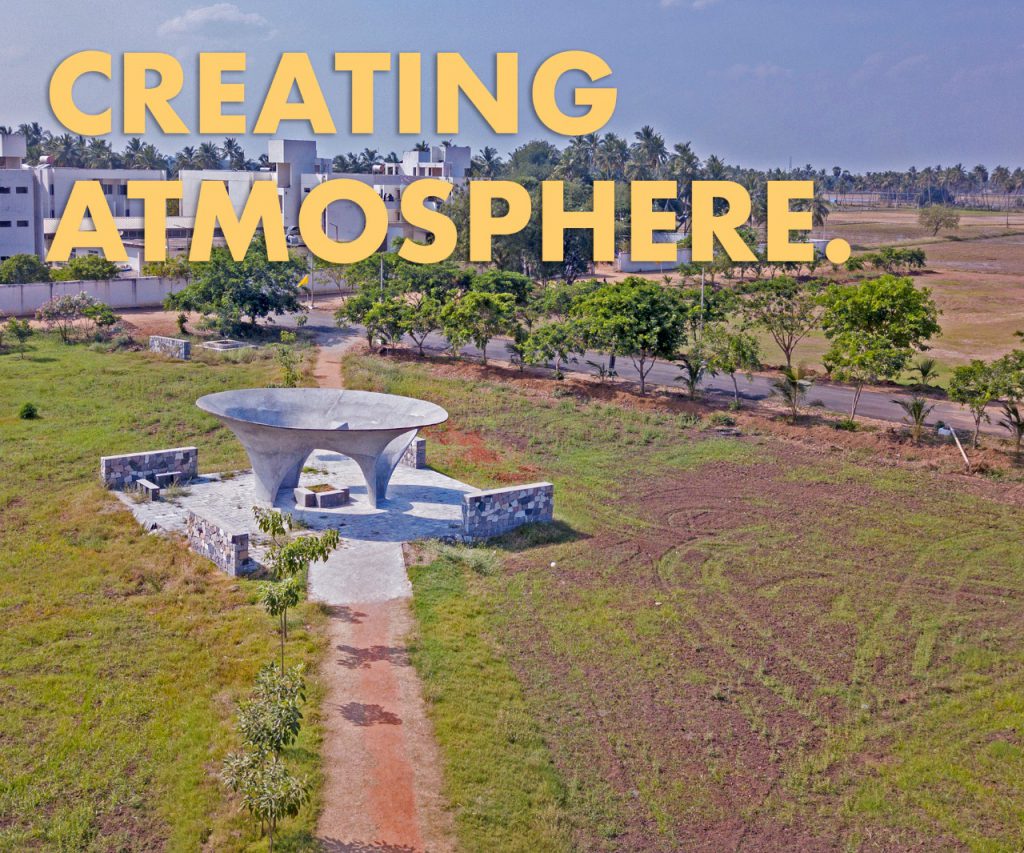
Architect Sanjay Mohe designed the CARE campus with an attempt to seek conversations with nature by opening up spaces. Spaces are seamlessly integrated, flowing into each other. Frames and views in the campus, enhances the experience with nature. Classrooms are not bound by brick walls, but private green courts’ spaces. Our campus certainly enriches the lives of hundreds of students and faculty, through these non-academic experiential spaces. There are diverse non-academic and extra curricular clubs, a student can choose from. These clubs engage and augment cognitive critical thinking abilities simultaneously, such as clubs for, photography, dance, music, etc.,. With Arts, Engineering, Business school and the Design cell, CARE is continuously working to create a multi disciplinary platform, to bring all the minds together and collaborate.
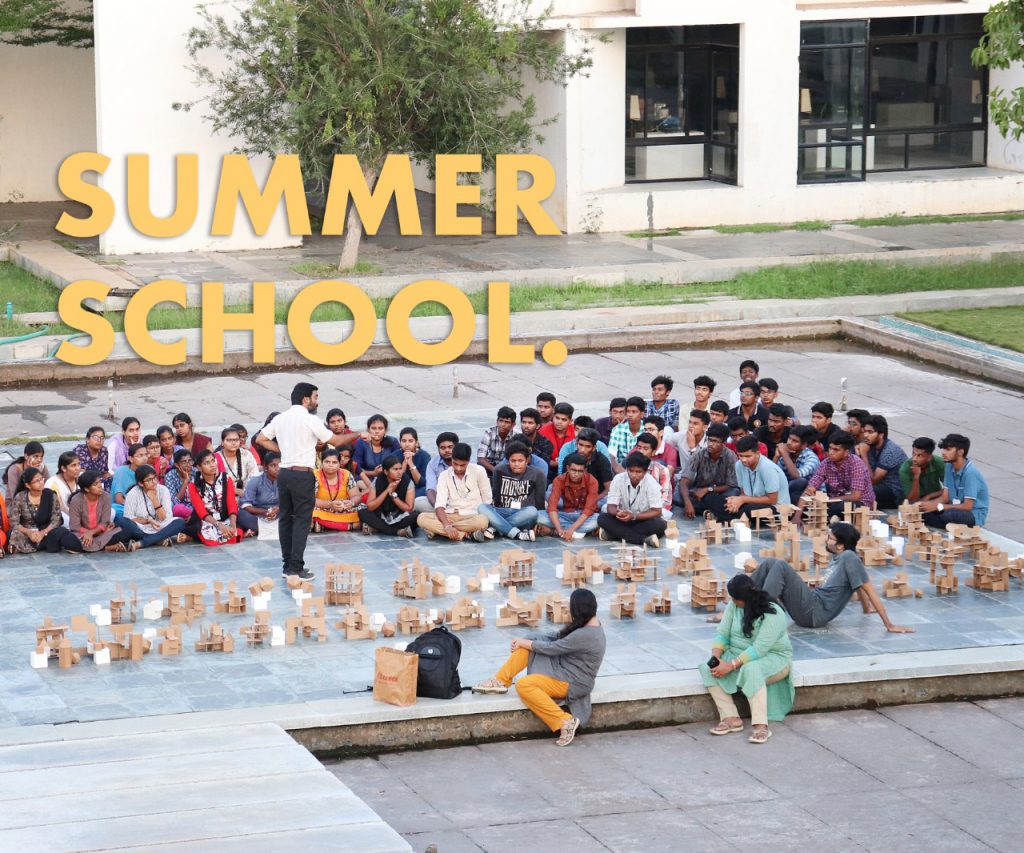
CARE regularly conducts Summer & Winter schools, during the vacation periods of every semester. The courses are open for college students and professionals. They can choose from a broader range of courses across a variety of disciplines in art, architecture and design. These courses allow students to engage with this exciting emerging field while gaining some of the most sought-after skills and understanding. The workshop experts are generally drawn from CARE’s renowned pool of resource personnel. Participation in summer schools has been shown to have substantial beneficial effects on educational progress.
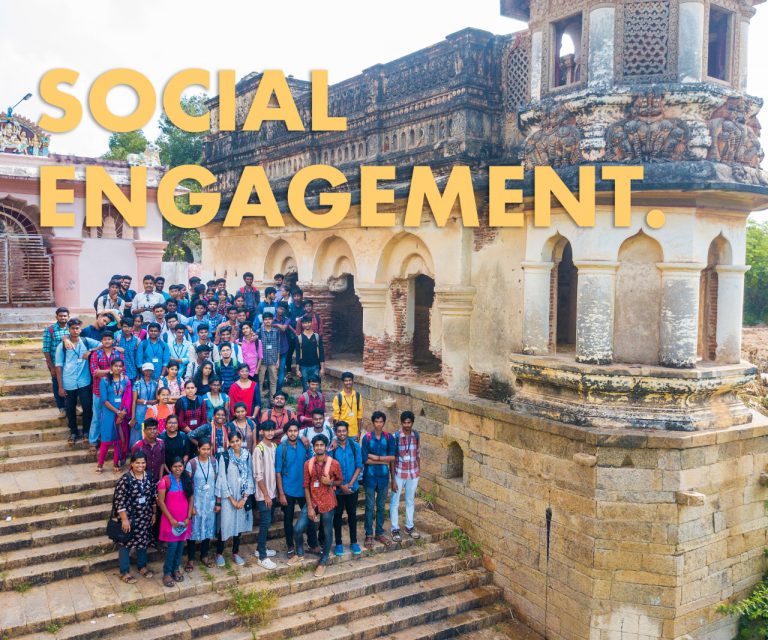
The social responsibility of architects lies in part in believing that architecture can create better places, that architecture can affect society. At CARE, most of our projects in the past 10 years have worked around the sites of the Cauvery delta region, in one way or the other. Architectural Documentation is a major thrust area at CARE, and it has been an integral part of its 10-years, both through studio and workshop itineraries. Photography, Photogrammetry, Aerial Photogrammetry & Surveying are some of the selected methods used by the involved faculty and students. Architectural drafting and drawing sessions are carried out like the professional measured drawing & surveying projects. We inculcate the importance of documentation practice, early for the students.

